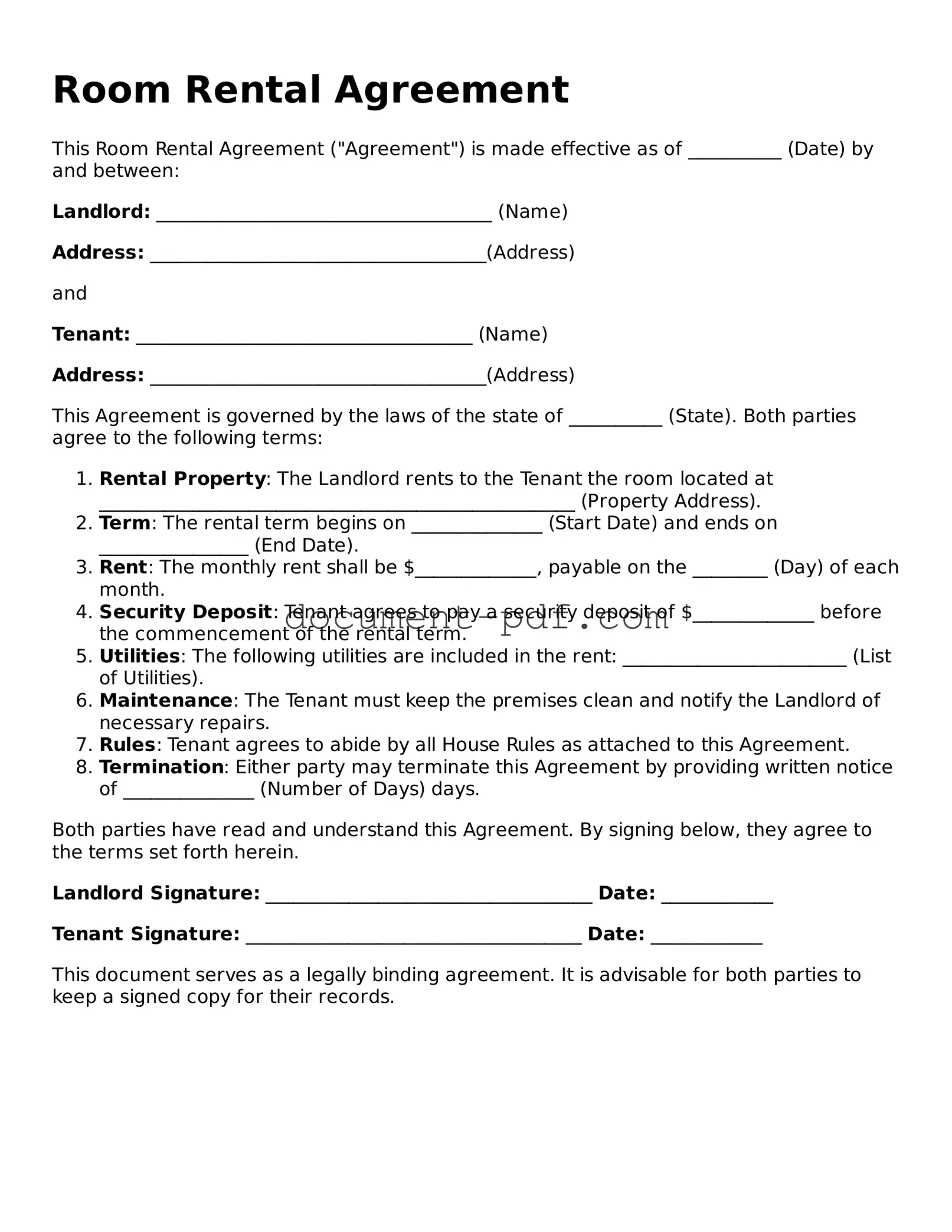Room Rental Agreement
This Room Rental Agreement ("Agreement") is made effective as of __________ (Date) by and between:
Landlord: ____________________________________ (Name)
Address: ____________________________________(Address)
and
Tenant: ____________________________________ (Name)
Address: ____________________________________(Address)
This Agreement is governed by the laws of the state of __________ (State). Both parties agree to the following terms:
- Rental Property: The Landlord rents to the Tenant the room located at ___________________________________________________ (Property Address).
- Term: The rental term begins on ______________ (Start Date) and ends on ________________ (End Date).
- Rent: The monthly rent shall be $_____________, payable on the ________ (Day) of each month.
- Security Deposit: Tenant agrees to pay a security deposit of $_____________ before the commencement of the rental term.
- Utilities: The following utilities are included in the rent: ________________________ (List of Utilities).
- Maintenance: The Tenant must keep the premises clean and notify the Landlord of necessary repairs.
- Rules: Tenant agrees to abide by all House Rules as attached to this Agreement.
- Termination: Either party may terminate this Agreement by providing written notice of ______________ (Number of Days) days.
Both parties have read and understand this Agreement. By signing below, they agree to the terms set forth herein.
Landlord Signature: ___________________________________ Date: ____________
Tenant Signature: ____________________________________ Date: ____________
This document serves as a legally binding agreement. It is advisable for both parties to keep a signed copy for their records.
